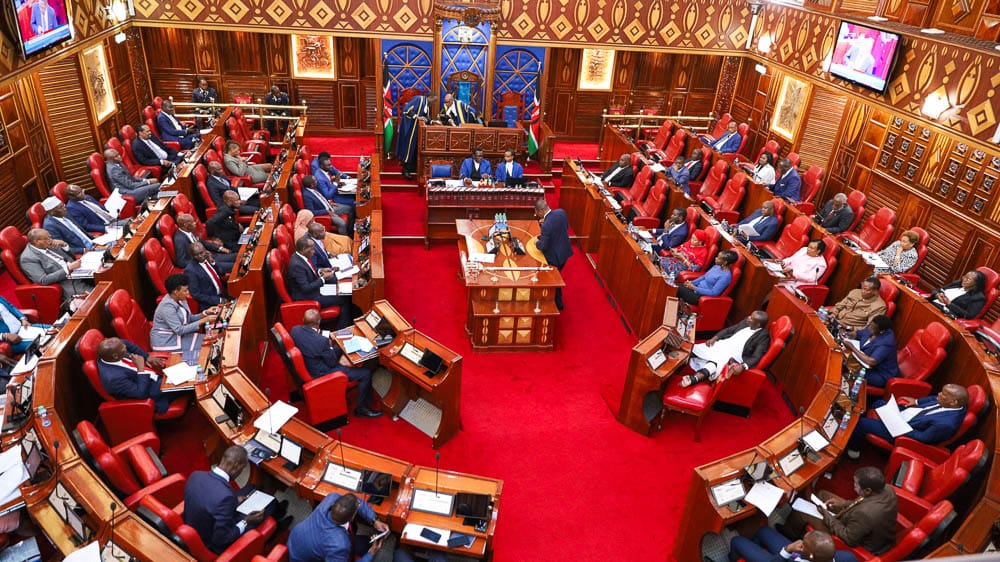Senators in tug of war over Sh16.8bn meant for the marginalised

The standoff has now placed the passage of the Equalisation Fund Appropriation Bill, 2025 in jeopardy, threatening to delay the disbursement of the Sh16.8 billion allocated to the fund in the current fiscal year.
A sharp confrontation has erupted in the Senate over the Sh16.8 billion Equalisation Fund after senators clashed over a controversial expansion of the list of counties eligible for the fund, which was originally set aside for marginalised areas.
The conflict arose after the number of beneficiary counties was expanded from 14 to 34, a move that has now raised fresh concerns that the fund may have been hijacked to favour politically connected regions instead of genuinely marginalised communities.
During a charged debate in the House, lawmakers traded accusations of manipulating the fund to benefit their own regions, warning that the original purpose of the fund—enshrined in the Constitution—was being distorted.
“What happened? How did you, as senators, increase the number of beneficiary counties from 14 to 34?” asked Kakamega Senator Boni Khalwale.
The Equalisation Fund is provided for under Article 204(1) of the Constitution, which mandates the allocation of 0.5 per cent of all national revenue to uplift marginalised areas by improving access to water, roads, electricity and health services.
Initially, it was directed at 14 counties, most of them in the Northeastern region.
But the Commission on Revenue Allocation (CRA) and the previous Parliament later revised the framework to include 34 counties by identifying marginalised sublocations and wards within them, not entire counties.
The standoff has now placed the passage of the Equalisation Fund Appropriation Bill, 2025 in jeopardy, threatening to delay the disbursement of the Sh16.8 billion allocated to the fund in the current fiscal year.
Khalwale criticised the Finance committee that oversaw the expansion, saying it introduced areas that do not meet the threshold for marginalisation. “Among the counties added was Kericho, which enjoys rainfall 11 months in a year. They want to fight with Turkana over money meant to provide water for its people,” he said.
He went further to question the inclusion of his own region. “I say this with maximum respect – no tribalism in my heart. Even back home in Bungoma, we are now beneficiaries of this fund, but we are not supposed to be. That must be re-examined.”
Mombasa Senator Mohamed Faki also expressed disappointment, saying the fund had been weakened by flawed decisions. “The Equalisation Fund was created with a clear purpose, but its implementation has been marred by unfortunate decisions that have hindered its impact,” he said.
Faki noted that 20 counties were added after the passing of new regulations, many of them controversially claiming marginalisation. “Even Kiambu was deemed marginalised,” he remarked.
Kericho Senator and Senate Majority Leader Aaron Cheruiyot, who was a member of the committee that recommended the expansion, defended the decision. He said the changes were guided by a broader understanding of inequality and marginalisation. “It’s like assuming everyone in Karen is wealthy, yet within Karen lies the Kuwinda slum,” he said.
Cheruiyot added that the Senate had received numerous petitions from citizens questioning the CRA’s criteria. “Yes, Kericho gets rainfall most of the year, but in places like Soin and Soliat, the land is 90 per cent stone. What good is rainfall if you can’t access water?” he posed.
But Nairobi Senator Edwin Sifuna dismissed the expanded list, warning that it undermined the spirit of the Constitution. “How do you drag water money from Mandera to Bungoma? There’s no justification for that,” he said.
Sifuna pointed to the contradictions in development across regions. “We have the largest solar power plant in Loiyangalani, Marsabit, but the locals don’t have power. They just watch the cables fly overhead to Suswa in Narok. And now the rest of you want to share their funds? We must be serious,” he added.
The growing tension now threatens not only the timely approval of the Equalisation Fund but also the credibility of the process meant to uplift neglected communities.
